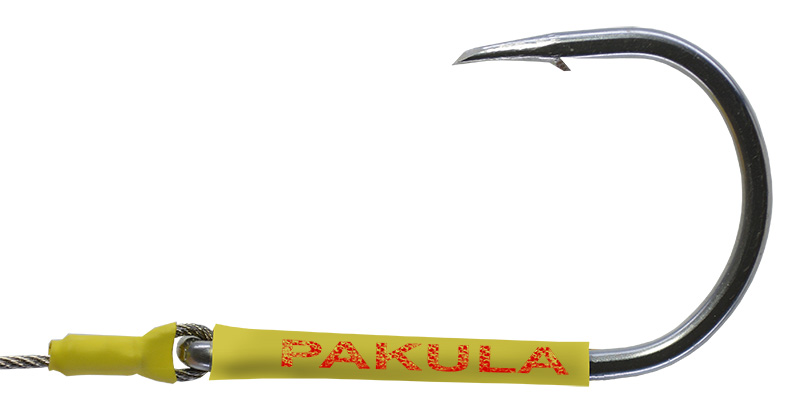Hook point alignment in skirted trolling lure rigs.
Peter Pakula 17th January 2015
Busting, straightening and bending hooks has been a very common problem for some, and totally non-existent for others. Hopefully this article will go some way to explain that the choice really is yours, whether to get a clean hook up rate or break points or bend and break hooks trying to get them into what is often a pretty solid mass of bone.

Keep in mind, every fish you've ever caught was because the hooks set well or the fish was tangled up somehow. It’s not the successful ones we are dealing with here. It’s the ones you didn’t hook in the first place or lost during the battle.
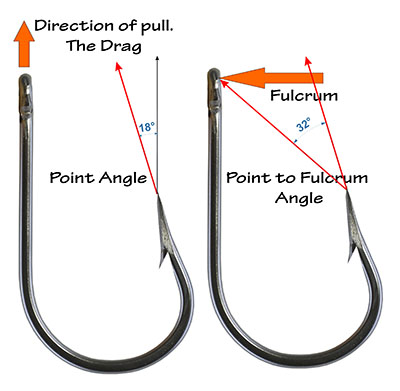
There are many factors involved in getting a great hook up rate, each of which needs examining. In this article, we are just looking at one tiny, but important aspect, the alignment of the hook point.
Firstly we need to create some terminology which hasn’t existed, as far as I know, no-one has looked at this topic in this manner. Terms like hook points, types of points, barbs, gape, stiff, loose rigs are around, but for a better explanation of getting a greater understanding of how hooks and rigs function, we need to add a few more terms.
The ‘Direction of Pull’ is the direction the force on the hook is coming from, i.e. the drag setting on the reel, water pressure on the line and (if the fish is running) the pressure of the lure being pulled backwards.
The ‘Point Angle’ is the angle of the hooks point direction relative to the shank of the hook (the part of the hook below the eye).
The ‘Fulcrum’ is where the hook pivots when pressure is applied to the point. In the case of rigs where to hook is on a loose loop the fulcrum is the hook eye. In the case of stiffer rigs, the fulcrum is somewhere above the hook eye depending on how stiff the rig is, but in most cases, it’s the upper end of the crimp next to the hook.
The ‘Point to Fulcrum’ angle is the difference between the direction the point is facing and the direct line from the hook point to the fulcrum. The ideal situation is that the point and fulcrum are directly in line which is also the direction of pull, meaning the hook point is being pulled directly in line with the direction of pull. However, a hook with that shape would have a very small gape for its size and the weight of such a hook would detrimentally affect lure action.
Stiff Hook Rigs
The images show common hook shapes stiff rigged, which is where the crimp on the wire butts up tightly to the hook eye to make the rig more rigid. Often heat shrink or tape is used to support and stiffen the stiffness of the rig.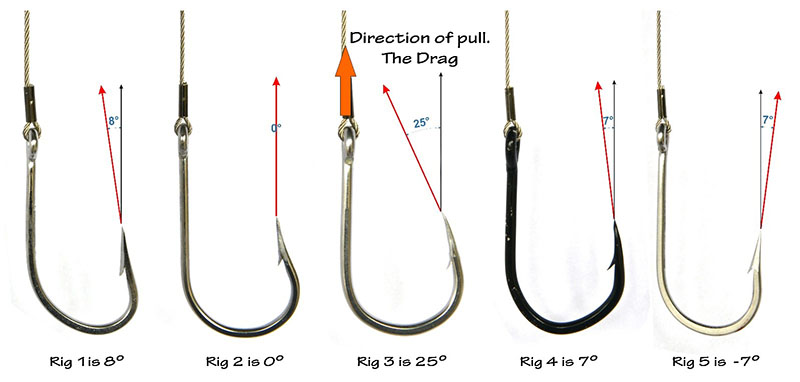 As you can see, none of the points is even close to being in line with the fulcrum. Many of the points are close to being parallel to the direction of pull, but being parallel is very different to being in line as we’ll see later. Rig 3 is the closest to having the point in line with the direction of pull, however, the angle of 25O is far from ideal. Anyone who has tried to hit a nail that’s at 250 into a piece of wood knows that’s it’s going to bend or snap. Hooks will also bend or snap if they hit something hard like bone at that angle.
As you can see, none of the points is even close to being in line with the fulcrum. Many of the points are close to being parallel to the direction of pull, but being parallel is very different to being in line as we’ll see later. Rig 3 is the closest to having the point in line with the direction of pull, however, the angle of 25O is far from ideal. Anyone who has tried to hit a nail that’s at 250 into a piece of wood knows that’s it’s going to bend or snap. Hooks will also bend or snap if they hit something hard like bone at that angle.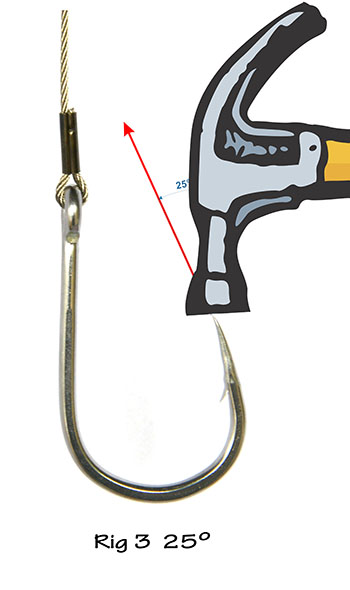 It is assumed that what you see out of the water remains the case during a hookup. To do that the rig would have to remain rigid under the load of the drag, which is rarely the case.
It is assumed that what you see out of the water remains the case during a hookup. To do that the rig would have to remain rigid under the load of the drag, which is rarely the case.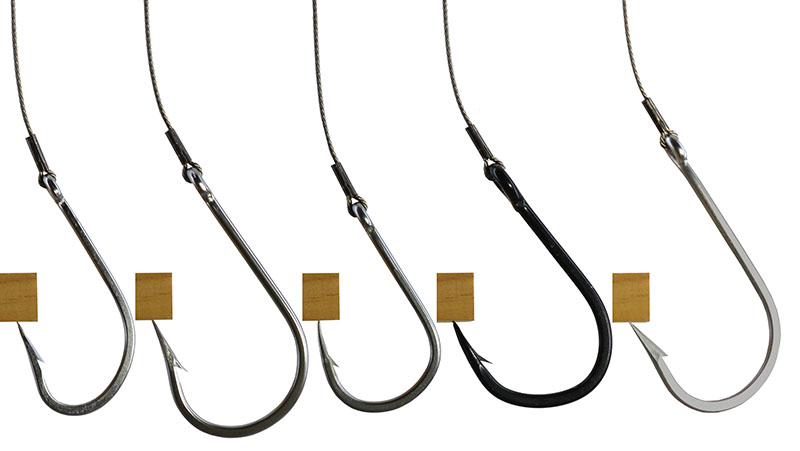
The image shows common hook types on what is commonly called the stiff rig under a load of 14 ounces or 400 grams which is much less than any drag setting used trolling lures.
What is evident is that in all but one hook shape, it’s the barb that’s entering the target first, rather than the hook point. If the barb is sharpened, then it is likely to cut along rather than penetrate.
The fulcrum is now at the end of the crimp away from the hook eye, which means the length of the shank has been extended.
The longer the shank, the more leverage there is on the hook point, the easier it is for the hook to bend.
The only hook that has the point even close to in line with the direction of pull is the centre one, which is in a great position if it survives the initial hammer strike.
To really appreciate what is happening here try the experiment yourself with the rigs you using under the load of the drag you are using.
Loose Hook Rigs
Here we have the same hooks rigged on a loose rig so the hook is able to swing freely on the loop.
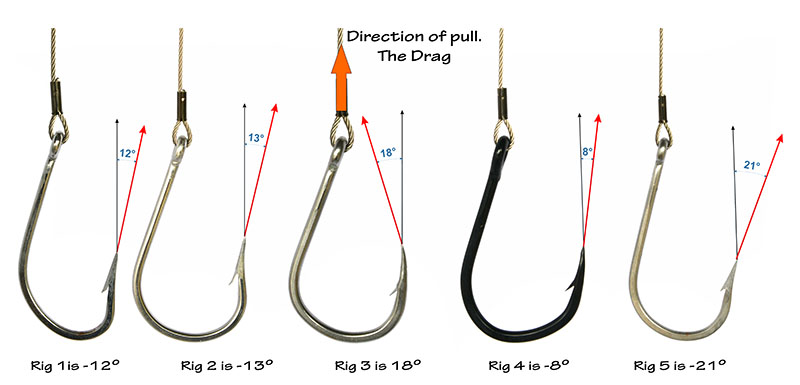 Unlike the stiff rig, most of the points of the hooks have a negative degree value meaning the points are facing more away than towards the fulcrum and the direction of pull. Only the centre hook has a positive value plus it’s point to fulcrum value is more in line with the direction of pull.
Unlike the stiff rig, most of the points of the hooks have a negative degree value meaning the points are facing more away than towards the fulcrum and the direction of pull. Only the centre hook has a positive value plus it’s point to fulcrum value is more in line with the direction of pull.
It would seem that all bar hook shapes like the one in the centre shouldn’t be used in loose rigs. However, we should wait for more information before we make a final judgement.
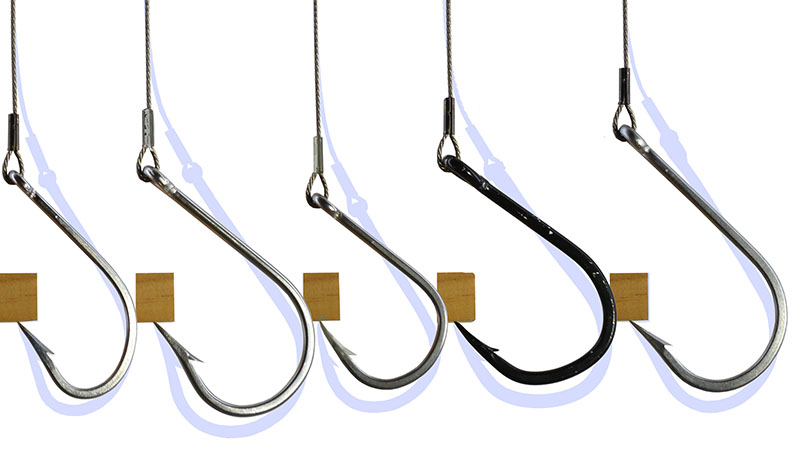 Once again the rigs are loaded with 14 ounces or 400 grams.
Once again the rigs are loaded with 14 ounces or 400 grams.
The stiff rigs are shaded in light blue so we can view the difference. In all cases, the fulcrum is now the shortest length, which is the hooks eye.
Also in all cases, the hook is sitting at a greater angle even though the hook points are directly in line with the direction of pull. The points are still in all, but the centre hook is digging in barb side first and the point is not in line with the direction of pull.
Because of the curved shape of the point in the middle rig the point is still in line with the direction of pull. Once again try this exercise with loosely looped rigs as shown using the force of your normal drag settings and see the results. Perhaps try more than your normal pressure and also try less and see what happens.
Water Drag
Another factor in rigging is what the hooks and rigs do when they’re being trolled in a lure at 6.5 to 9 knots.
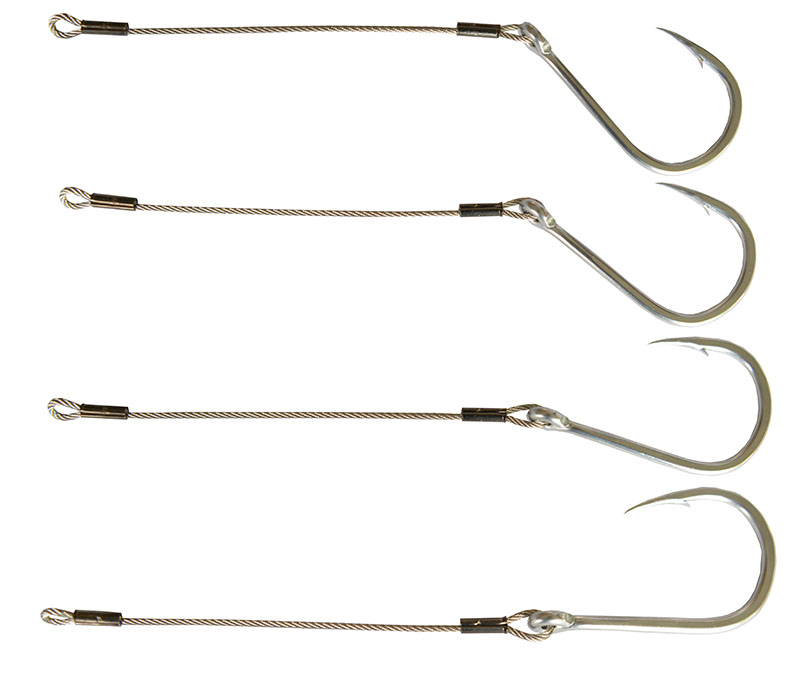 Images from top to bottom show the angle the hook travels at slow speeds down to its angle at high speeds.
Images from top to bottom show the angle the hook travels at slow speeds down to its angle at high speeds.
If you watch your rod tip you’ll see it bend and straighten as the lure cycles through it breathing and diving. The hook also goes through the angles shown to some extent through the lures working cycle.
If the hook isn’t free to cycle through the angles shown as with a stiff rig, it’s more likely to spin than a loose rig which means its hook point will not be riding up to go around a jaw bone – which is what we want to get a consistently good hook up rate. This regardless of hook-lock systems, tooth picking and other methods of locking the lure rig to the skirted lure in most cases.
So far the news doesn’t look too good for most, which is understandable as most don’t have a great hook up rate, especially targeting marlin on rigged lures.
After you’ve checked your rigs the way you have been using them there are a few things you can try that might just improve things for you.

It’s pretty common to use a hook file to cut down barbs for better penetration through a fish’s jaw and to sharpen points.
We can also bind and or glue keel weights to the hooks to lessen the chances of rigs spinning and maintain the hook point up.
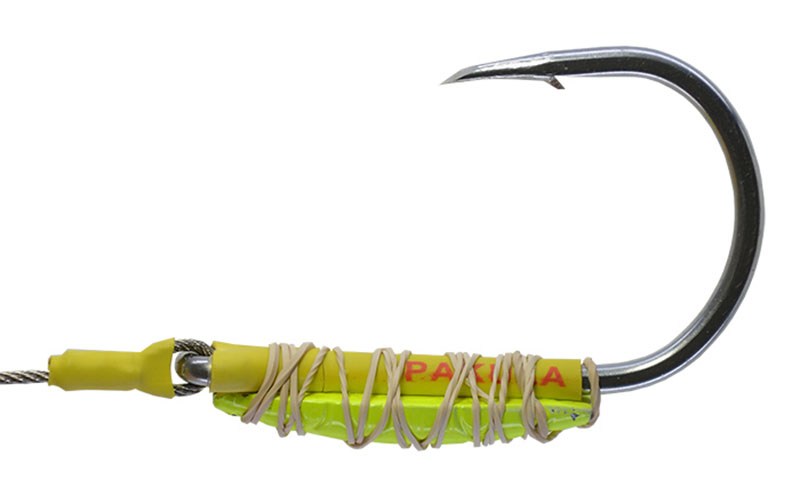 In most cases, hooks are sharpened with the points in line with the original hooks shape and the direction of the point which maintains the original angles of the point.
In most cases, hooks are sharpened with the points in line with the original hooks shape and the direction of the point which maintains the original angles of the point.
It’s common to use a file to sharpen, or rather reshape points and cut down barbs for easier penetration.
Try a slightly different approach to the way you sharpen your hooks by aiming the point in the direction of the pull and the fulcrum.
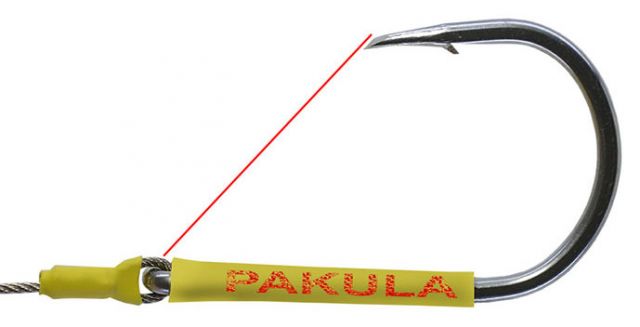
The point is aimed, not in line with the hooks shape, but straight at the fulcrum where the direction of pull is coming from. The points taper is based on the force applied to the point, which is the drag setting when you are trolling.
You still cut down the barb if needed for better penetration, but don’t sharpen the barb side of the point as you want the point to pivot and dig in rather than let the barb slice across and not into its target.
Your tests will show you whether your points are too fine or too thick. Use materials like pine wood or several layers of cardboard to see how your hooks penetrate. When you do the tests hold onto the leader to pull the hooks in and see if the drag settings will pull the hook in past the barb, or bend the point or if you need to change the point by making it thicker or finer or if you need to cut the barb down a little more.

Try sharpening a hook in this manner and then repeat the exercises mentioned previously. The difference in my tests and subsequent hookup rates certainly improved dramatically from what I considered at the time a great conversion rate.
The way you rig a lure and sharpen hooks is not the magic that will make a huge difference alone. It’s just one of the many things to consider amongst the many other factors like drag settings, hook size, lure choice and positioning that go towards increasing your success.
We can’t expect to have total control over where a hook hits its target or if the fish has a fully closed mouth when the hook hits its target but we can try and understand what the hook is likely to do when it does. We can, however, try our best to have the rig do what we want it to when it does hit the target, that is set fully past the barb so that the pressure is on the bend of the hook and not its point.
The hooks used in this article are all commonly used in skirted lure trolling rigs. The hooks in the centre of the rig images are Pakula Dojo Hooks which are specifically designed to give you the best chance of getting a great hook up rate using rigged skirted trolling lures.
